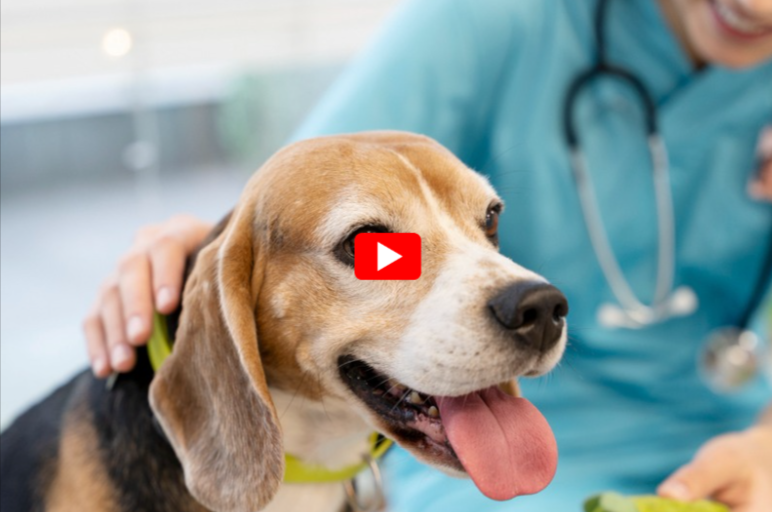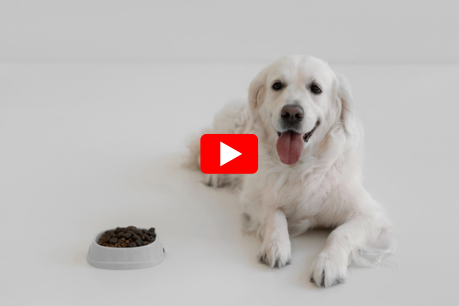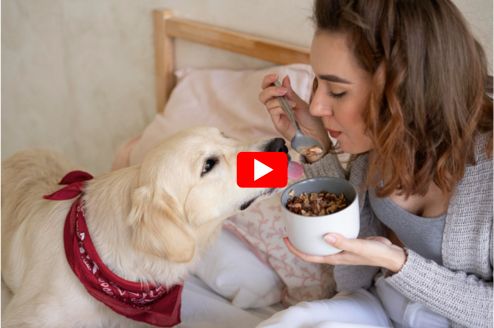Is Baking Soda Bad For Dogs: Safety, Risks & Tips Explained
Baking soda, also known as sodium bicarbonate, is a common household item found in many kitchens. It is used for baking, cleaning, deodorizing, and even some health remedies.
But when it comes to our furry friends, especially dogs, pet owners often wonder: Is baking soda bad for dogs? Can it be toxic or harmful if ingested? And is it safe to use around dogs in cleaning or grooming?
Baking soda can be harmful to dogs if ingested in large amounts, causing vomiting, diarrhea, or worse. Use with caution and keep it out of reach.
In this comprehensive guide, we will dive deep into what baking soda is, its potential risks and dangers to dogs, signs of poisoning, and what to do in case your dog consumes it.
Additionally, we will cover safe alternatives and tips to keep your dog healthy and safe in environments where baking soda is used.
What Is Baking Soda?
Baking soda is a white crystalline powder chemically known as sodium bicarbonate. It is widely used in baking as a leavening agent, helping dough to rise.
Besides culinary uses, baking soda serves multiple purposes like neutralizing odors, cleaning surfaces, and soothing skin irritations.
Because it is relatively non-toxic to humans, many people assume it is safe for pets too. However, this is not always the case.
The way a dog’s body reacts to substances like baking soda can be different, and ingestion of large quantities may cause harmful effects.
Is Baking Soda Toxic to Dogs?
The short answer: Baking soda can be toxic to dogs if ingested in large amounts. While small quantities might not be immediately harmful, excessive ingestion can lead to serious health issues.
Baking soda contains sodium, and dogs that consume too much sodium bicarbonate can experience sodium ion poisoning. This condition can cause a range of symptoms, some of which can be life-threatening if untreated.
How Does Baking Soda Affect Dogs?
When a dog ingests baking soda, the sodium content can disrupt the electrolyte balance in the dog’s body. Electrolytes like sodium, potassium, and chloride are crucial for nerve function, muscle contraction, and maintaining fluid balance.
Excessive sodium intake can lead to:
-
Vomiting and diarrhea: The dog’s body tries to get rid of the excess substance.
-
Lethargy and weakness: Due to disrupted electrolyte balance.
-
Tremors or seizures: Severe sodium poisoning can affect nerve and muscle function.
-
Increased thirst and urination: To flush excess sodium out of the body.
-
Elevated heart rate: Resulting from cardiovascular stress.
-
In severe cases, coma or death if not treated promptly.
How Much Baking Soda Is Dangerous for Dogs?
The toxicity level depends on the size of the dog and the amount ingested. Generally, ingestion of about 0.5 grams per pound (1 gram per kg) of baking soda is considered potentially toxic. For example:
-
A 10-pound dog consuming 5 grams or more of baking soda might experience toxic effects.
-
Larger dogs might tolerate slightly more, but it is still risky.
Because baking soda is found in many household products, accidental ingestion can occur. Dogs that eat baking soda from spilled boxes, baked goods containing baking soda, or cleaning products are at risk.
Signs and Symptoms of Baking Soda Poisoning in Dogs
If you suspect your dog has ingested baking soda, watch for the following symptoms:
-
Vomiting (often severe and repeated)
-
Excessive drooling
-
Lethargy or weakness
-
Tremors or muscle twitching
-
Seizures
-
Increased thirst and urination
-
Restlessness or anxiety
-
Elevated heart rate or abnormal breathing
If you observe any of these signs, it is important to seek veterinary care immediately.
What To Do If Your Dog Eats Baking Soda?
If you catch your dog immediately after ingestion, try to prevent further consumption and contact your veterinarian or an emergency pet poison hotline right away. Do not try to induce vomiting or administer any treatments without professional advice.
Veterinarians may perform:
-
Physical examination
-
Blood tests to check electrolytes
-
Induce vomiting if appropriate
-
Administer activated charcoal to reduce absorption
-
Provide intravenous fluids to correct electrolyte imbalances
-
Monitor heart and neurological status
Prompt veterinary care improves the chances of full recovery.
Can Baking Soda Be Used on Dogs for Skin Problems?
Some pet owners use baking soda in homemade remedies to soothe skin irritations or as a deodorizer. However, using baking soda directly on your dog’s skin or coat can be risky.
Baking soda has an alkaline pH which can disrupt the natural acidic pH of the dog’s skin, potentially causing dryness, irritation, or rashes. Dogs with sensitive skin or allergies might react worse.
If you want to use baking soda as a topical treatment:
-
Dilute it properly with water (never apply dry baking soda).
-
Avoid broken or irritated skin areas.
-
Consult your veterinarian first.
Safer alternatives like oatmeal baths or vet-approved medicated shampoos are recommended for skin issues.
Is Baking Soda Safe Around Dogs?
Using baking soda as a household cleaner or deodorizer is generally safe as long as it is kept out of the dog’s reach. Dogs that lick or eat baking soda can become sick.
Precautions:
-
Store baking soda in a secure container or cabinet.
-
Clean up any spills immediately.
-
Avoid using baking soda in areas where your dog eats or drinks.
-
Use pet-safe cleaning products instead when possible.
Alternatives to Baking Soda for Dogs
If you want to freshen your dog’s environment or treat minor skin issues, consider pet-safe options such as:
-
Oatmeal baths: Great for soothing itchy, dry skin.
-
Apple cider vinegar sprays: Diluted properly, can help with odors and minor skin irritations.
-
Commercial pet deodorizing sprays: Formulated specifically for dogs.
-
Natural air fresheners: Like baking soda placed in inaccessible containers, or pet-safe essential oils (used cautiously).
Final Thoughts
Baking soda is a versatile household product but can be harmful to dogs if ingested or misused. While not inherently poisonous in tiny amounts, ingestion of moderate to large quantities can cause sodium poisoning with serious symptoms.
Pet owners should be cautious about storing baking soda securely and avoid using it directly on dogs without veterinary guidance. If your dog accidentally consumes baking soda or shows signs of poisoning, seek immediate veterinary help.
Maintaining a safe environment and using pet-approved products is the best way to keep your dog healthy and happy.
📚 References
- Pet Poisoning: First Aid
https://www.mayoclinic.org/first-aid/first-aid-severe-bleeding/basics/art-20056661
- 9 Baking Soda Uses for Pet Owners
https://www.petmd.com/dog/slideshows/9-baking-soda-uses-pet-owners
- Toxic and Dangerous Foods Your Dog Should Never Eat
https://www.webmd.com/pets/dogs/ss/slideshow-foods-your-dog-should-never-eat
.



